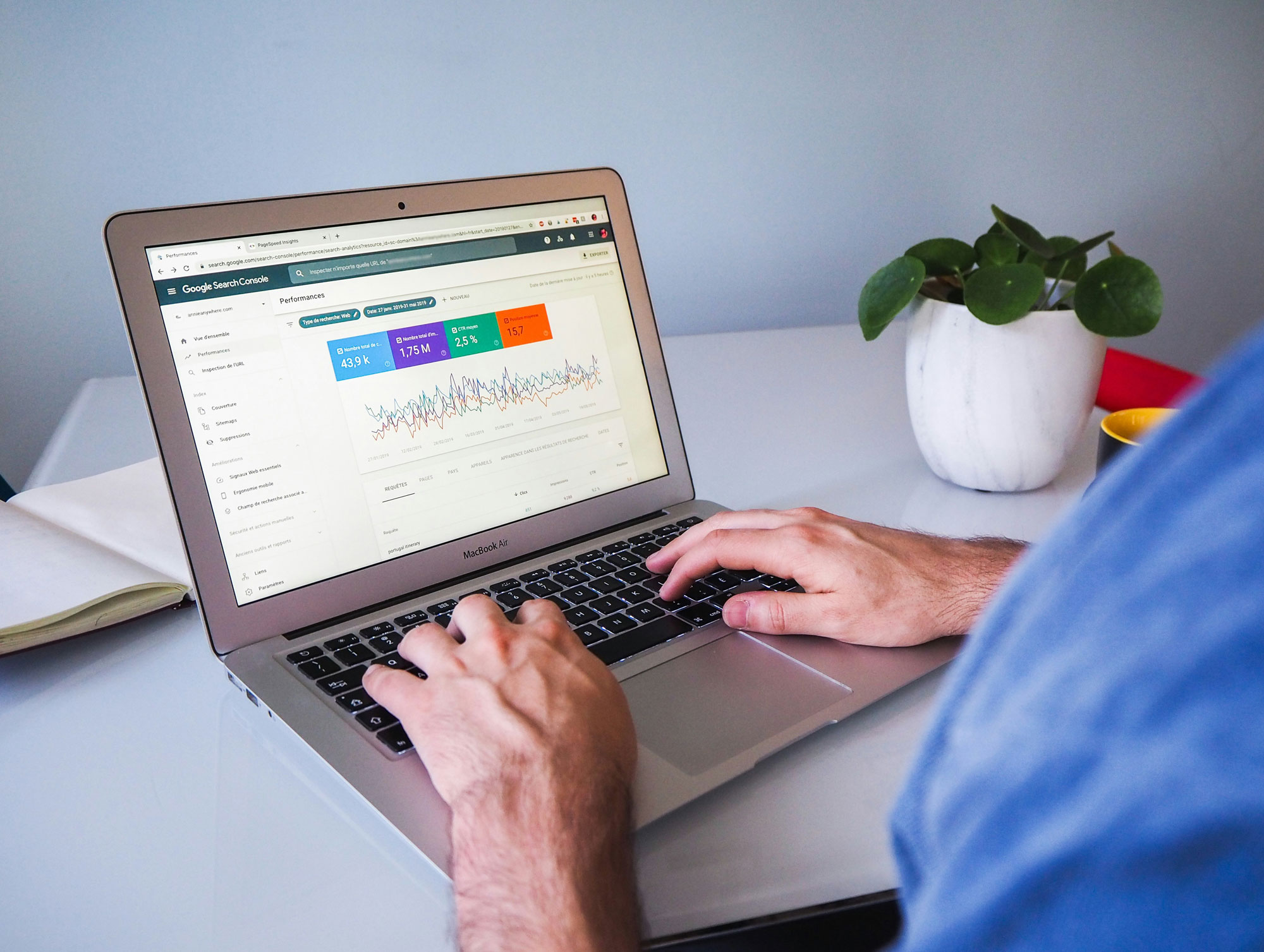
Key Highlights
- Discover how email personalization goes beyond simply adding a subscriber’s name.
- Explore ten powerful strategies to tailor email content effectively.
- Understand the impact of personalization on engagement and conversion.
- Learn from real-world success stories of brands using personalized campaigns.
- Find actionable tips to elevate your email marketing strategy.
Introduction

In today’s digital world, people get many marketing messages in their inboxes. To stand out, businesses need to be more personal. Email marketing helps with this. It allows companies to connect with their audience in a meaningful way. By customizing email content to fit what people like and do, businesses can build better relationships. This also helps increase engagement and leads to more sales. This blog looks at how personalizing emails can improve your overall marketing strategy and enhance the customer experience.
Top 10 Email Personalization Strategies You Need to Implement

Looking beyond just using a subscriber’s first name, good email marketing relies on knowing and using their special traits and likes. Email personalization strategies include various ways to help you create email campaigns that connect with people personally. By using these strategies, you can change basic email blasts into important conversations. This helps build better customer relationships and gets more people involved.
1. Crafting Compelling Personalized Subject Lines
A recipient’s name in the subject line is a great way to get attention. A personalized subject line creates the first impression of your email. This can help decide if your email gets opened or disappears in the inbox. When you include the recipient’s name or mention what they bought before, you grab their interest. This makes the email feel more relevant to them. This simple trick can greatly improve your open rate because people are attracted to messages that seem made just for them.
2. Utilizing Behavioral Data for Tailored Content
To enhance your email marketing personalization, leverage behavioral data for tailored content. By analyzing how subscribers interact with your emails or website, you can provide more personalized experiences. Utilize marketing automation solutions to track user behavior and segment your audience effectively. Tailor your email marketing campaigns based on their actions, such as clicks, opens, or purchases. Implement dynamic content blocks to showcase products that align with their preferences. This targeted approach increases customer engagement and drives conversions. Understanding your audience’s behaviors allows you to send relevant content at the right time, creating a more meaningful connection with your subscribers.
3. Segmenting Your Audience for Targeted Messaging
Segmenting your audience is crucial for effective email personalization. By dividing your subscribers based on demographics, behaviors, or preferences, you can tailor your messages to specific groups, increasing relevance and engagement. Utilize data insights to create segments such as loyal customers, new subscribers, or those who have abandoned their carts. Personalizing content for each segment can lead to higher open rates and better conversion rates. Implementing audience segmentation allows you to send targeted messages that resonate with different audiences, driving a more personalized experience. This strategic approach ensures that your subscribers receive content that aligns with their interests and needs, fostering strong relationships and enhancing the overall customer experience.
4. Personalizing Emails with Dynamic Content Blocks
One innovative approach to enhancing email personalization is by incorporating dynamic content blocks. These dynamic blocks allow for customization within the email itself, tailoring the content to different segments of your audience. By utilizing this strategy, you can showcase specific products or information based on the recipient’s preferences, behavior, or demographics. For instance, you can display different product recommendations for various customer segments or showcase personalized offers based on individual purchase history. This level of customization not only creates a more engaging and relevant email experience but also increases the likelihood of higher open rates and conversion rates. Dynamic content blocks are a powerful tool in taking your email marketing campaigns to the next level, providing a more personalized touch that resonates with your subscribers.
5. Leveraging AI for Predictive Email Personalization
Leveraging AI for predictive email personalization takes your strategies to the next level by analyzing data insights and customer behavior patterns. By utilizing machine learning algorithms, AI can effectively predict customer preferences and behaviors, enabling you to tailor email content with precision. This technology automates the process of delivering personalized emails based on individual customer data, ensuring a more personalized experience for each recipient. Implementing AI-driven predictive analytics in your email marketing efforts can significantly impact your conversion rates and customer engagement. It allows you to send relevant content at the right time, ultimately strengthening customer relationships and boosting the effectiveness of your email campaigns. Harnessing the power of AI in email personalization is a strategic move towards achieving better results and improving brand loyalty.
6. Implementing Trigger-based Emails for Immediate Engagement
Implementing trigger-based emails is a pivotal strategy for immediate engagement. By utilizing NLP terms like marketing automation solutions and personalized content, you can create a more engaging and relevant experience for your audience. Trigger-based emails are emails that are automatically sent based on specific actions or behaviors, such as website visits or cart abandonment. This approach ensures timely communication tailored to individual customer journeys, leading to higher open rates and conversion rates. Implementing trigger-based emails not only enhances customer engagement but also strengthens brand loyalty by providing valuable and timely interactions with your audience. Leveraging this strategy effectively can take your email personalization efforts to the next level and drive better results for your marketing campaigns.
7. Using Personalized Email Signatures for a Human Touch
When aiming for a more personalized experience in email marketing, consider using personalized email signatures to add a human touch. By incorporating the sender’s real name and title in the signature, you can strengthen relationships with individual customers. This simple yet effective strategy can make your emails feel more personal and genuine, helping to increase customer engagement and loyalty. Personalized email signatures not only showcase your brand identity but also create a sense of connection with the recipient. Implementing this personalization tactic can take your email marketing efforts to the next level, resonating with your audience on a more personal and meaningful level.
8. Optimizing Send Times Based on User Activity
By optimizing send times based on user activity, you can significantly enhance the impact of your email personalization strategies. Analyzing when subscribers are most active and engaged allows you to schedule your emails for maximum visibility and response rates. Leveraging NLP techniques and data insights, such as predictive analytics, enables you to send emails at the right time, ensuring they resonate with individual customers. This level of personalization not only increases open rates but also boosts conversion and transaction rates. Tailoring send times based on user behavior, like online shopping patterns or email interaction history, creates a more personalized experience, ultimately strengthening your customer relationships and improving the effectiveness of your email marketing campaigns.
9. Including Personalized Recommendations and Offers
One great way to connect with subscribers is by giving them personalized recommendations that match what they like. By looking at their purchase history and online behavior, you can create a list of product recommendations that suit their needs and interests.
Here are some ideas to use this strategy:
- Suggest products based on what they bought before.
- Offer items that other customers like them often view.
- Provide special discounts on products they are interested in.
10. Encouraging Feedback with Personalized Questions
Encouraging feedback through personalized questions is a powerful strategy in enhancing email personalization. By tailoring questions based on the subscriber’s preferences or behavior, you can elicit valuable insights that further refine your marketing efforts. Incorporating questions like “What products are you most interested in?” or “How can we improve your experience?” not only shows that you value their input but also fosters a sense of engagement and loyalty. This approach helps in building stronger relationships with individual customers, leading to increased customer satisfaction and brand loyalty. Moreover, using the feedback obtained to personalize future communications creates a more personalized experience, driving better results and enhancing the overall effectiveness of your email marketing campaigns.
Understanding the Impact of Email Personalization
Email personalization goes beyond simply including a recipient’s name. By tailoring content based on user behavior and preferences, businesses can create a more engaging and relevant experience. This approach leads to higher open rates, improved click-through rates, and ultimately boosts conversion rates. Leveraging AI for predictive analytics enables the delivery of personalized product recommendations or content suggestions, enhancing the customer journey. Understanding your audience through segmentation allows for targeted messaging that resonates with different customer groups. Implementing effective email personalization strategies can foster stronger relationships with individual customers, increasing brand loyalty and driving long-term engagement. In today’s digital landscape, personalized email marketing is not just a trend; it’s a vital component of a successful marketing strategy.
Analyzing the Benefits of Personalized Emails
Personalized emails can revolutionize your email marketing campaigns by creating a more engaging and tailored experience for your audience. By leveraging email personalization strategies, you can boost open rates, click-through rates, and overall conversions. Crafting personalized subject lines, utilizing behavioral data, and segmenting your audience are just a few ways to enhance customer engagement and loyalty. Through personalized content and dynamic blocks, you can provide relevant offers and product recommendations based on individual customer data. Predictive analytics and AI technologies take your email personalization to the next level, ensuring that each email resonates with the recipient on a personal level, driving higher engagement and fostering strong relationships.
The Science Behind Email Personalization: How it Works
Email personalization operates on a sophisticated algorithm that integrates various NLP techniques and data analysis methodologies. By leveraging predictive analytics, user behavior patterns, and segmentation algorithms, email marketing platforms can deliver tailored content to individual customers. This personalized approach enhances customer engagement and boosts conversion rates. Through the strategic use of dynamic content blocks, product recommendations, and personalized subject lines that include the recipient’s name, email personalization creates a more engaging and relevant experience for the subscriber. By understanding customer data, preferences, and purchase history, brands can send emails at the right time with the right content, strengthening brand loyalty and fostering strong relationships with their audience.
Crafting Your Email Personalization Strategy

Making a good email personalization strategy takes some planning and effort. It’s not just putting the subscriber’s first name in the email. You need to really know your audience. Using data can help you create messages that matter to them. The aim is to give a personal touch so that each subscriber feels you are talking right to them.
Gathering and Utilizing the Right Data
To ensure effective email personalization strategies, gathering and utilizing the right data is crucial. Start by collecting subscriber data such as demographics, purchase history, and engagement patterns. Utilize marketing automation solutions to segment your audience based on these insights for targeted campaigns. Incorporate personal details like the subscriber’s first name for a more personalized experience. Consider utilizing predictive analytics to tailor content based on customer behavior. Analyze data insights to understand customer preferences and behaviors better. By leveraging the right data, you can create tailored content that resonates with individual customers, leading to higher open and conversion rates. Implementing data-driven strategies is the cornerstone of successful email marketing personalization.
Tools and Technologies for Effective Email Personalization
In today’s digital landscape, a plethora of email marketing tools and technologies for personalization can empower businesses to streamline and enhance their email campaigns. Choosing the right email marketing software is pivotal. Look for platforms that offer features like:
|
Feature |
Description |
|
Drag-and-drop editors |
Simplify email creation with user-friendly interfaces. |
|
List segmentation |
Divide your audience into distinct groups based on shared characteristics. |
|
Personalization tags |
Dynamically insert customer-specific information into emails. |
|
A/B testing |
Compare different versions of your emails to optimize performance. |
|
Automation workflows |
Automate email sequences based on triggers and customer behavior. |
Real-World Examples of Successful Email Personalization

Many brands in different fields have achieved great success with personalized email marketing campaigns. These real-world examples show that focusing on the customer can improve engagement. It also leads to real results for the business.
Case Study: E-commerce Brand Boosts Sales with Personalized Campaigns
In a remarkable case study, an e-commerce brand significantly elevated its sales through meticulously crafted personalized campaigns. By harnessing the power of email personalization strategies, the brand established a more profound connection with its audience, leading to remarkable results. Through the implementation of effective email marketing personalization tactics and leveraging a marketing automation solution, the brand offered a more personalized experience to individual customers. By tailoring emails with product recommendations, the brand not only reduced cart abandonment but also enhanced customer engagement and conversion rates. This case study exemplifies the impact of personalized email marketing campaigns in building strong relationships with customers and driving tangible business outcomes.
How a SaaS Company Increased Engagement with Personalized Onboarding Emails
Implementing personalized onboarding emails, a SaaS company significantly boosted engagement levels. By utilizing marketing automation solutions and email marketing software, they delivered a more personalized experience to individual customers. Tailoring the content based on the subscriber’s first name and their specific needs, the company created a strong relationship with each recipient. Through segmentation and dynamic content, the emails provided relevant information about the product, ensuring a higher open rate and improved customer engagement. By analyzing customer data and incorporating predictive analytics, the SaaS company was able to send timely and personalized messages, leading to increased conversion rates and overall customer satisfaction.
Conclusion
Personalizing your email campaigns can help you connect better with your audience and lead to more sales. When you create customized content, use data about how people behave, and set up automatic emails based on actions, you can offer a personal experience for your readers. It’s important to know how email personalization can affect your marketing plans. Look at the advantages, use the right technology, and collect useful data to make smart choices. Real stories show how effective personalized emails can be. Use these methods to improve customer engagement and loyalty through personal communication. Start making your emails more personal today to see a good change in your email marketing efforts.
Frequently Asked Questions
What are the key components of an effective email personalization strategy?
An effective email personalization strategy looks closely at the customer journey. It uses data to create targeted messages. By segmenting based on marketing efforts, businesses can provide custom content that connects with each subscriber.
How can I use AI to enhance email personalization?
Integrating AI into your marketing automation solution can greatly improve how personalized your emails are. You can use predictive analytics to understand what customers may need. This can help you to automatically add a subscriber’s first name in greetings.
What data is most important for personalizing emails?
Essential information for personalizing emails is demographics, website activity, purchase history, and email engagement. By using this customer data from your email list, you can create more targeted and relevant content.
Can email personalization improve customer retention?
Yes, email personalization can really help keep customers coming back. It builds strong relationships with each individual customer. When you adapt your marketing strategy to offer personalized content, it makes customers feel valued. This raises the chance that they will stay loyal to your brand.





